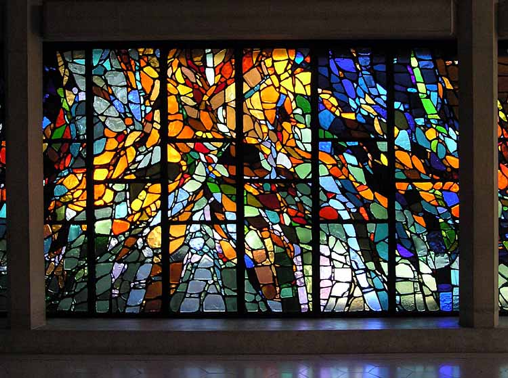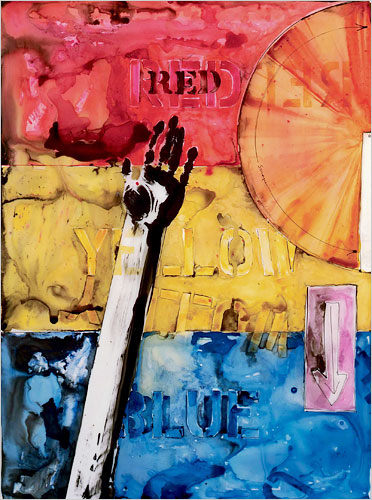Read this article about one method for working on glass.
FAQ:
1. What is the difference between transparent, translucent and opaque? (source)
Transparent – see through, i.e. Clear Dura-Lar or Clear Acetate
Translucent – allows light to pass through, but objects on other side are not clearly distinguished, i.e. Drafting Film and Vellum
Opaque – not see through, light does not pass through, i.e. Cling Film and Colored Shrink Film
2. When working with plastic sheeting, how do I determine which thickness of film I need? (source)
The standard term used to describe the thickness (or gauge) of plastic film is mil. Mil is expressed in thousands of an inch. For example .005″ is said “5 mil”.
Below are examples of how thick a mil is.
.004” (4 mil) = sheet of copier paper
.010” (10 mil) = business card or 80# cover
.020” (20 mil) = manila folder with both flaps closed
3. What is the difference between Clear-Lay, Dura-Lar & Acetate? (source)
Clear-Lay is a vinyl based film that is very economical, easy to cut, has a low heat tolerance and is acid free. Dura-Lar is a polyester based film known for its clarity and stability. It has a high heat tolerance, will not tear or discolor and is archival. Acetate is a general purpose film that is biodegradable, tears easily, does not have a high heat tolerance and is NOT acid free or archival.
4. What’s the difference between parchment, vellum, and paper? (source)
The term parchment is a general term for an animal skin which has been prepared for writing or printing. Parchment has been made for centuries, and is usually calf, goat, or sheep skin. The term vellum from the French veau refers to a parchment made from calf skin. The manufacture of parchment is quite involved. After the skin is removed from the animal and any hair or flesh is cleaned away, it is stretched on a wooden frame. While it is stretched, the parchment maker or parchminer scrapes the surface of the skin with a special curved knife. In order to create tension in the skin, scraping is alternated by wetting and drying the skin. The parchment is scraped, wetted, and dried several times to bring it to the right thickness and tautness. Sometimes a final finish is achieved using pumice as an abrasive followed by chalk in order to prepare the surface of the skin to accept ink.
Parchment has traditionally been used instead of paper for important documents such as religious texts, public laws, indentures, and land records as it has always been considered a strong and stable material. The five pages of the U.S. Constitution as well as the Declaration of Independence, the Bill of Rights, and the Articles of Confederation are written on parchment.
The terms parchment and vellum are also used in the paper making industry. Parchment paper is made from cellulose fibers prepared from fir trees or plants such as cotton or flax. Paper can be made which mimics the thickness and smooth surface of parchment. The terms refer to the finish of the paper and should not be relied upon as an indicator of its long term stability.
HISTORY
The history of transparent mediums can go as far back as 2750 BC, when the Egyptians started melting glass into beads and dying them for jewelry, to the first century AD, when Romans would glaze their windows with colors in order to decorate which then led to Medieval stained glass, all the way up to present time. (History of Stained Glass)
Along with glass as a medium, we can also use plastic. Although it does not have quite so much of an extensive history, it has still been used in the past. The main person I had come across in my research that used plastic as a medium for art is Jasper Johns. He enjoyed using plastic as a medium because it caused the materials he used, such as ink and paint, to react differently than it would on canvas or paper. He said that “he was attracted to the plastic by its ‘independence’ and the way ‘it removes itself from my touch,’” (NY Times).
Transparent substrates have had such a long history for a reason: they allow environmental properties to interact with the image being produced. Whether the light is coming through the piece, allowing it to fill the room with bright colors, or the work embraces surface qualities, transparent substrates give us the ability to make art that can be made with no other media.

